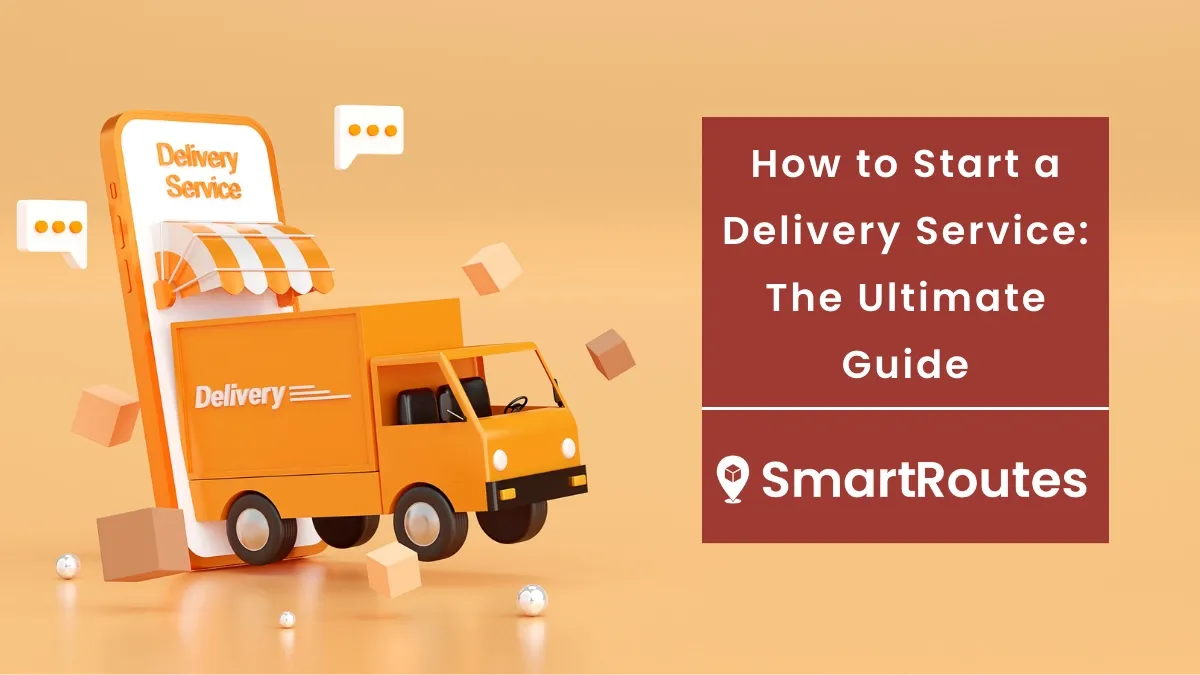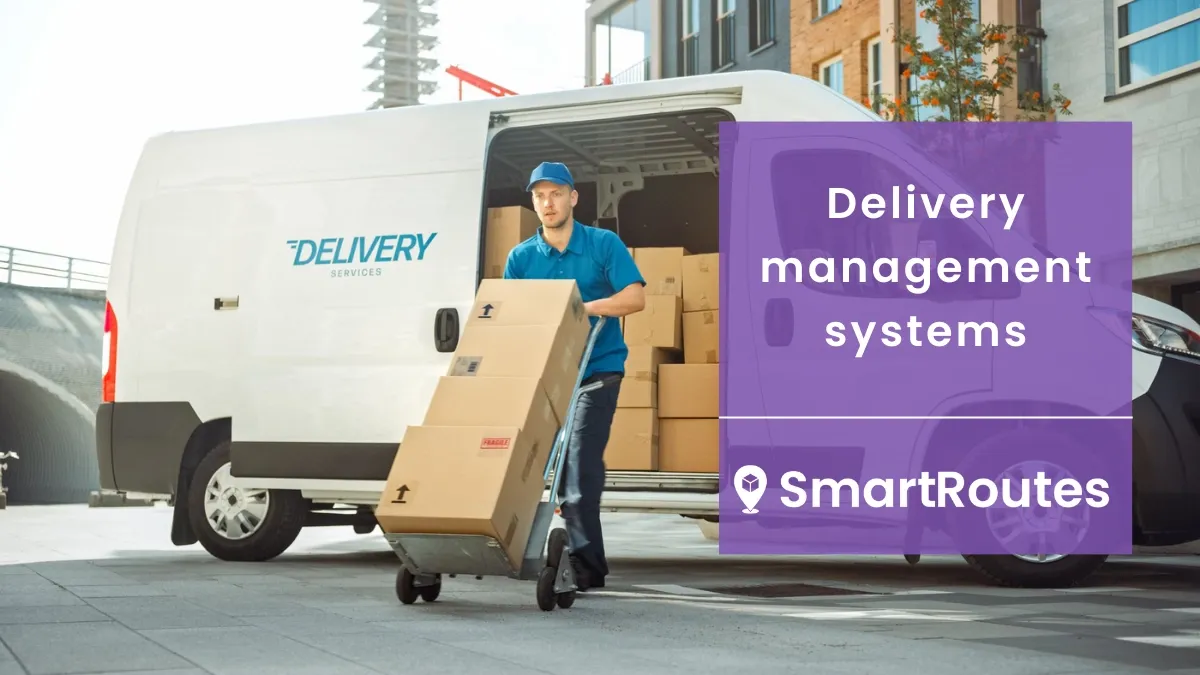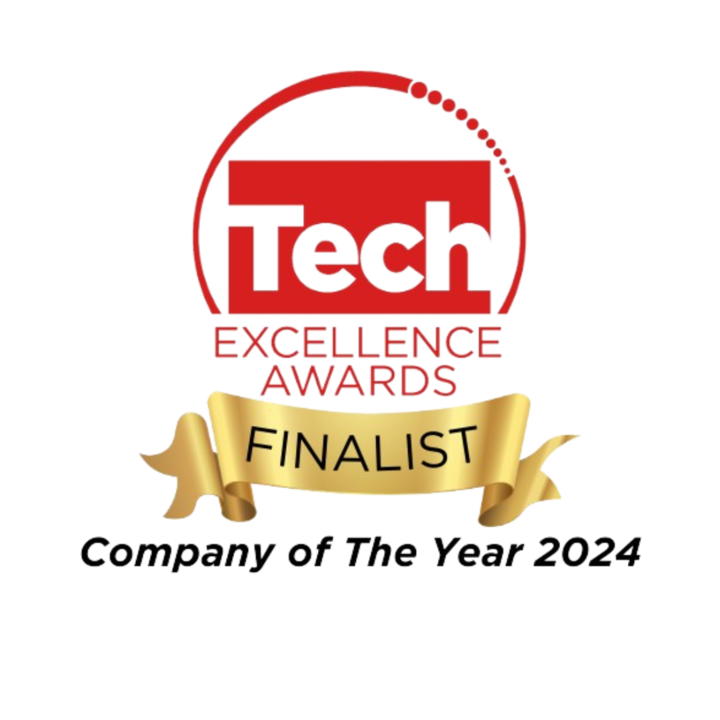How to Manage Direct to Consumer Delivery
In this blog, we will delve deeper into the world of direct to consumer delivery, exploring its benefits, strategies for success and the key considerations businesses need to keep in mind.
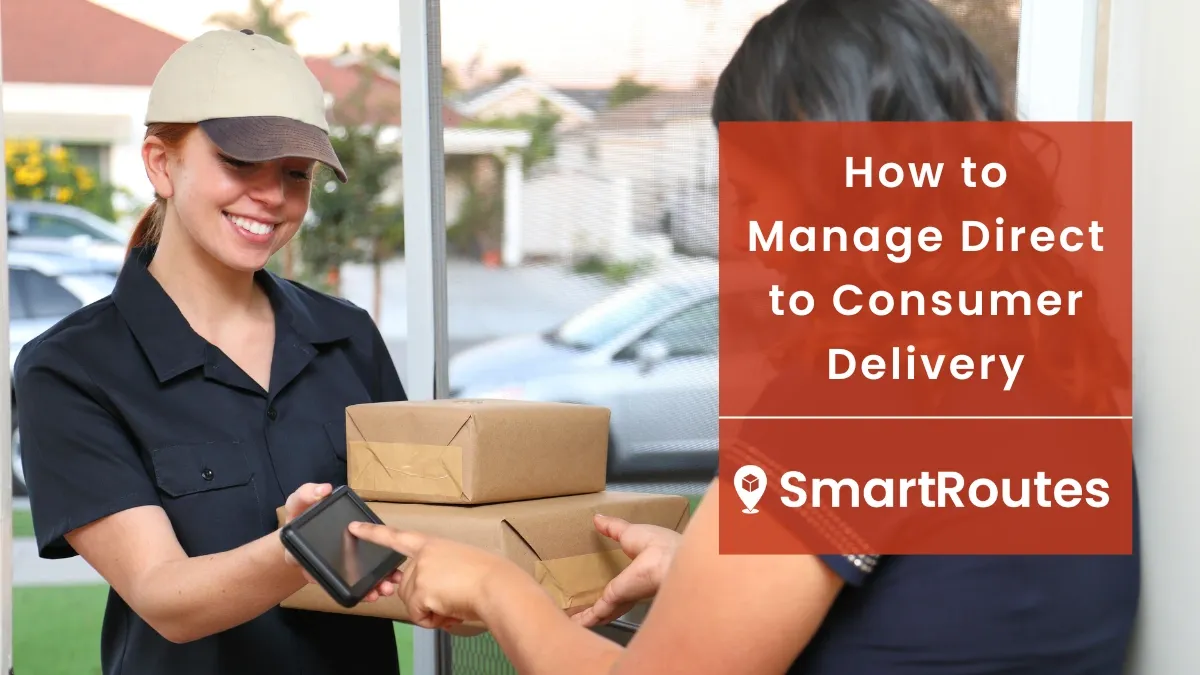
In recent years, the direct-to-consumer (D2C) business model has experienced a significant surge in popularity. This can be attributed to the growing consumer demand for faster delivery times and the changing landscape of traditional brick-and-mortar stores. With more and more placing orders online, many physical stores have witnessed a decline in foot traffic, while businesses with a strong online presence have observed an influx of customers.
In particular, younger demographics are increasingly bypassing the traditional in-store shopping experience, opting instead to explore the vast array of products and services available online. This shift in consumer behavior has created a unique opportunity for businesses to capitalize on the substantial market share that is up for grabs in the D2C space. The growth potential of the direct-to-consumer industry is truly remarkable. Projections indicate that it is set to reach a staggering 213 billion U.S. dollars this year (2023). This explosive growth showcases the immense opportunities available for businesses willing to embrace the D2C model and meet the evolving demands of today's consumers.
By understanding the significance of this industry's growth and staying attuned to the latest trends, businesses can position themselves to thrive in this business landscape while providing an unmatched delivery experience. In this blog, we will delve deeper into the world of direct to consumer delivery, exploring its benefits, strategies for success and the key considerations businesses need to keep in mind.
What is direct to consumer delivery
What are the benefits of direct to consumer delivery?
Direct to consumer order fulfillment
Emerging technology helps business to sell directly to consumers
Maximizing the Potential of Direct-to-Consumer Delivery
What is direct to consumer delivery
Direct-to-consumer (D2C) delivery is a strategy that bypasses the conventional retail store or warehouse—the middleman—by allowing consumers to place orders directly for products or services. With this approach, businesses eliminate the need for intermediaries and establish a direct line of communication and transaction with their customers.
Traditionally, the retail industry operated through a distribution chain involving wholesalers, distributors and retailers. However, with the rise of eCommerce and advancements in technology, businesses can now streamline their operations and offer a more seamless shopping experience by adopting the D2C model.
When consumers opt for direct-to-consumer delivery, they have the convenience of accessing a wide range of products and services from the comfort of their homes or wherever they may be. By leveraging online platforms, businesses can showcase their offerings, provide detailed product information, and offer a streamlined purchasing process.
SmartRoutes Route Planning Software
Streamline your entire delivery process, all from one platform

What are the benefits of direct to consumer delivery?
Dark Stores
Essentially, dark stores refer to dedicated fulfillment centers or warehouses where goods are stored but never intended for display in a physical retail store. Instead, these facilities are strategically designed to efficiently fulfill online orders and cater specifically to the direct-to-consumer model.
One of the key advantages is the ability to locate dark stores in areas where warehousing space is more affordable compared to high commercial areas. With dark stores, order fulfillment becomes a streamlined and highly efficient operation. Dedicated teams can work within these optimized spaces to pick, pack, and ship orders swiftly and accurately. This eliminates the need for the complex logistics of managing inventory and stock rotation in physical stores.
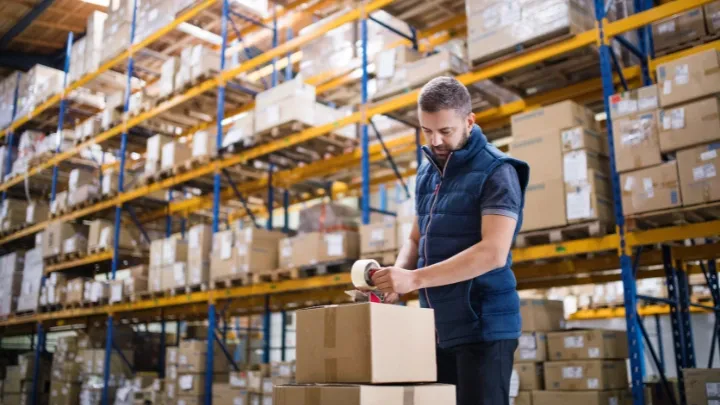
Time to Market
Unlike traditional retail models that require searching for retail space, which can be both time-consuming and costly, D2C businesses can establish their presence swiftly and efficiently. This allows entrepreneurs to capitalize on emerging market trends quickly.
By bypassing the need for physical retail space, businesses can eliminate the challenges associated with finding locations with high footfall. As long as there is a place to store their products, even if it's a short-term solution, setting up an eCommerce store can be achieved incredibly fast using platforms like WooCommerce or Shopify.
Product Availability
One of the significant benefits of D2C delivery is the centralized housing of goods in one location, which offers consumers a seamless and efficient shopping experience. By having all products readily available within a single inventory hub, businesses can enhance customer satisfaction and provide a range of advantages for shoppers.
Consumers can easily search for their desired products online, quickly browse through related options and make informed purchasing decisions. This streamlined browsing experience not only saves customers time but also increases their chances of finding suitable alternatives. In the absence of physical constraints, businesses can showcase a wider range of product variations, colors, sizes and models, providing customers with more choices and catering to their diverse preferences
Customer Insight
The direct communication channel between businesses and customers in the D2C model allows for a deeper understanding of customer needs and preferences. By actively engaging with customers, businesses can proactively request feedback, whether it's regarding their products, services or the overall purchasing experience. This valuable feedback provides businesses with actionable insights that can be used to enhance their offerings, improve customer satisfaction, and refine their strategies.
By interacting with customers on a personal level, businesses can foster a sense of connection and loyalty. This personalized approach not only strengthens the customer-business relationship but also helps businesses better understand individual customer preferences, enabling them to offer tailored recommendations and personalized experiences.
In addition to fostering direct relationships, the D2C model provides businesses with access to a wealth of data related to the delivery process. By closely monitoring the delivery journey, businesses can gather data on various aspects such as delivery times, transit routes, and customer satisfaction with the delivery experience. This data-driven approach allows businesses to identify any potential bottlenecks or areas for improvement in the delivery process.
More Control Over the Delivery Experience
A major reason why businesses choose the direct-to-consumer strategy is the heightened visibility and control they have over the delivery experience. By managing the entire process, from order fulfillment to doorstep delivery, businesses can ensure that customers have a positive and seamless experience. This control over the delivery process is crucial in shaping the customer's perception of the brand and fostering long-term loyalty.
When businesses handle the delivery process themselves, they have the ability to set and maintain high standards of service. They can establish clear protocols and expectations for their delivery operations, ensuring that deliveries are executed on time, with professionalism, and in a courteous manner. By eliminating the reliance on third-party logistics providers (3PLs), businesses can mitigate the risks associated with inconsistent or subpar delivery experiences that can negatively impact the brand's reputation.
Improves Profitability
Traditional retail operations often require businesses to invest in expensive retail locations. The cost of securing a prime retail space with high footfall can be substantial, particularly in desirable commercial areas. Additionally, businesses must allocate resources to maintain and enhance the physical retail environment, including expenses related to store layout, fixtures and staff salaries. These overhead costs can erode profit margins and limit a business's ability to expand rapidly.
The D2C model can also lead to significant savings in warehousing costs. Traditional retail operations often require businesses to store their inventory in proximity to their retail locations, ensuring quick access to products for in-store purchases. However, this proximity comes at a premium, as warehousing space in commercial areas can be expensive. By selling directly to consumers, businesses can decentralize their warehousing operations, seeking more cost-effective storage solutions in locations that offer favorable rental rates.
Customer-Centric
When customers purchase products from DTC businesses, they have the advantage of direct access to the brand's customer service channels. Whether they encounter a defective product, experience a delay in delivery, or have any other questions or concerns, they can reach out to the brand directly for assistance. This eliminates the need for customers to navigate through complex third-party systems or rely on intermediaries for support. The streamlined communication process ensures that customers' concerns are heard and addressed promptly, resulting in a more satisfactory resolution.
Brand Awareness
D2C businesses have embraced digital platforms, particularly social media, as a powerful tool for building brand communities. Social media provides a direct channel for businesses to connect with their customers, foster engagement, and create a sense of community.
Many D2C businesses have harnessed the trend of pop-up stores to their advantage. While these businesses may not have a permanent physical store, they leverage the concept of pop-up stores to create excitement and generate buzz for a limited time. Customers have the opportunity to touch, feel, and experience the products, which can significantly influence their purchasing decisions. Even if customers choose to make the actual purchase online, the exposure to the brand in a physical setting leaves a lasting impression and contributes to increased brand awareness.
Direct to consumer order fulfillment
When it comes to direct-to-consumer fulfillment, businesses have several options to consider based on their specific needs and resources.
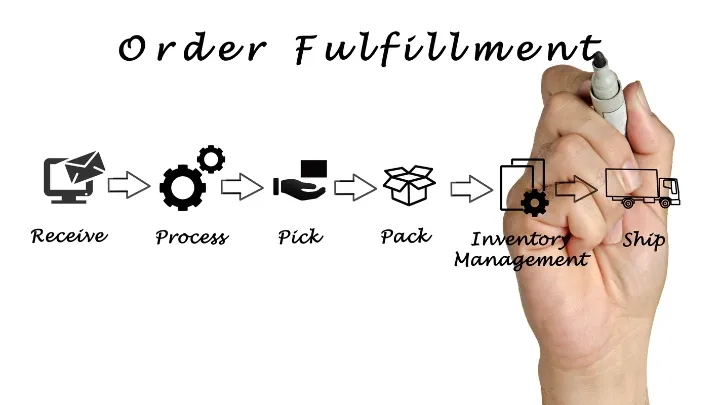
The two main approaches are in-house fulfillment and out-of-house fulfillment, each with its own advantages and considerations with a third option being a mixture of the two.
1. In-house
In-house fulfillment entails businesses taking care of the delivery process themselves, without relying on a third party. This approach involves having an internal delivery team or fleet, depending on the size and scale of the business. While in-house fulfillment may require more initial setup time and management, it offers businesses total control over the delivery process. Additionally, there are numerous software systems available in the market that can help automate and streamline delivery operations, enhancing efficiency and scalability.
By opting for in-house fulfillment, businesses can tailor the delivery experience to their specific requirements. They have the flexibility to prioritize certain aspects of the process, such as delivery speed, packaging customization or additional services. However, it's important to note that managing inhouse fulfillment involves various responsibilities, including vehicle maintenance, driver training, route optimization and handling any delivery-related challenges or exceptions. Businesses need to ensure they have the necessary infrastructure, resources and expertise to handle the complexities associated with managing their own fulfillment operations.
2. Out of house
Out-of-house or outsourced fulfillment, commonly known as third-party logistics (3PL), is a popular option for many businesses venturing into D2C delivery. This approach involves partnering with an established logistics provider that already has a comprehensive network and infrastructure in place. By outsourcing fulfillment to a 3PL, businesses can benefit from the provider's expertise, resources and established relationships with carriers and delivery networks.
One significant advantage of out-of-house fulfillment is the speed of implementation. Since 3PLs have an established logistics network, businesses can quickly integrate their operations into the existing system. This allows for faster order processing, efficient inventory management, and streamlined delivery processes. Additionally, 3PLs often offer additional services such as returns management and customer support, relieving businesses of those responsibilities.
While outsourcing fulfillment to a 3PL may come with associated costs, it is often a more affordable option when compared to building a delivery network from scratch. By leveraging the existing infrastructure and expertise of a 3PL, businesses can focus on their core competencies while ensuring reliable and efficient delivery operations.
3. Hybrid Approach
In certain cases, businesses may choose a hybrid approach that combines elements of both in-house and out-of-house fulfillment. This option involves using in-house delivery vehicles for local or regional deliveries while relying on a 3PL for nationwide or long-distance shipments. This approach allows businesses to capitalize on the advantages of both models, offering flexibility and cost optimization based on specific delivery requirements.
Emerging technology helps business to sell directly to consumers
There are several emerging technologies that are playing a significant role in enabling businesses to sell directly to consumers more efficiently. Leveraging innovative solutions, such as route planning and delivery management software, businesses can streamline their operations, enhance customer experiences, and drive growth in the DTC sector.
Route Optimization: One of the fundamental capabilities of route planning software is its ability to optimize delivery routes. By analyzing factors such as order volume, delivery locations and time constraints, the software generates efficient and cost-effective delivery routes. This results in reduced delivery times, minimized fuel consumption and improved overall operational efficiency.
Real-time Tracking: Delivery management software often includes real-time tracking features that provide businesses and customers with visibility into the status and whereabouts of their deliveries. Through GPS integration, businesses can monitor the progress of each delivery, enabling them to address any potential issues proactively. Real-time tracking also allows businesses to provide accurate delivery updates to customers, enhancing transparency and customer satisfaction.
Proof of Delivery: Many route planning and delivery management software solutions offer electronic proof of delivery (POD) functionality. This feature allows drivers to capture digital signatures, photos, or other forms of confirmation upon successful delivery. By digitizing the POD process, businesses can eliminate paperwork, reduce errors, and maintain a reliable record of deliveries. This not only improves operational efficiency but also provides businesses with a comprehensive audit trail in case of disputes or customer inquiries.
Analytics and Reporting: By leveraging data captured during the delivery process, businesses can gain valuable insights into their operations, such as delivery performance, driver productivity, and customer satisfaction metrics. These analytics enable businesses to identify areas for improvement, make data-driven decisions, and optimize their DTC strategies for better outcomes.
Integration Capabilities: To further enhance efficiency and productivity, delivery management software often integrates with other business systems, such as e-commerce platforms, inventory management tools, and customer relationship management (CRM) software. Seamless integration allows for seamless data exchange, eliminating manual data entry, improving accuracy, and enabling end-to-end visibility of the order fulfillment process.
Maximizing the Potential of Direct-to-Consumer Delivery
As highlighted throughout this blog, direct-to-consumer delivery offers businesses several advantages. The ability to bypass traditional retail channels and establish a direct connection with customers allows for faster delivery times and greater control over the entire fulfillment process. Moreover, the opportunity to gather valuable customer insights and build direct relationships fosters trust and loyalty, ultimately leading to repeat business.
By capitalizing on the benefits of direct-to-consumer delivery and staying at the forefront of technological advancements, businesses can unlock growth opportunities, establish strong customer relationships, and achieve long-term success in the digital age.
With the help of innovative technologies like SmartRoutes, businesses can navigate the D2C landscape with confidence and unlock new levels of success. To experience the transformative power of SmartRoutes firsthand, we encourage businesses to take advantage of our 7-day free trial to explore our full range of features.
Frequently asked questions
1. What is Direct to Consumer (DTC) delivery, and how does it differ from traditional delivery methods?
Direct to Consumer (DTC) delivery is a distribution strategy where products are shipped directly from the manufacturer or producer to the end consumer, bypassing intermediaries like retailers. Unlike traditional delivery methods, which involve multiple stages in the supply chain, DTC delivery is a more streamlined approach that often allows for quicker, more personalized, and cost-effective deliveries.
2. What are the benefits of implementing a Direct to Consumer delivery strategy for my business?
Implementing a DTC delivery strategy offers several advantages for businesses, including increased control over the customer experience, better access to customer data and feedback, the potential for higher profit margins, and the ability to establish stronger brand-customer relationships. Additionally, DTC delivery can help businesses adapt to changing market dynamics and consumer preferences.
3. How can I optimize the logistics and route planning for DTC delivery to reduce costs and delivery times?
Optimizing logistics and route planning for DTC delivery involves using advanced technology and data analysis. Businesses can employ route optimization software to find the most efficient delivery routes, reducing fuel and time costs. Real-time tracking and communication tools can also help in responding to changing conditions and providing customers with accurate delivery times.
4. What are some common challenges or obstacles in managing Direct to Consumer delivery, and how can I overcome them?
Common challenges in DTC delivery include last-mile delivery complexities, inventory management, and meeting customer expectations for quick and accurate deliveries. To overcome these challenges, businesses can invest in efficient last-mile solutions, adopt inventory management software, and set clear delivery expectations with customers while providing transparent communication and tracking.
5. What are the key technologies and tools available to streamline and enhance Direct to Consumer delivery operations?
Technologies and tools that can enhance DTC delivery operations include route optimization software, real-time tracking systems, inventory management software, customer relationship management (CRM) software, and customer communication platforms. These tools improve efficiency, visibility, and customer satisfaction in the DTC delivery process.
If you enjoyed this blog, you may also be interested in:
